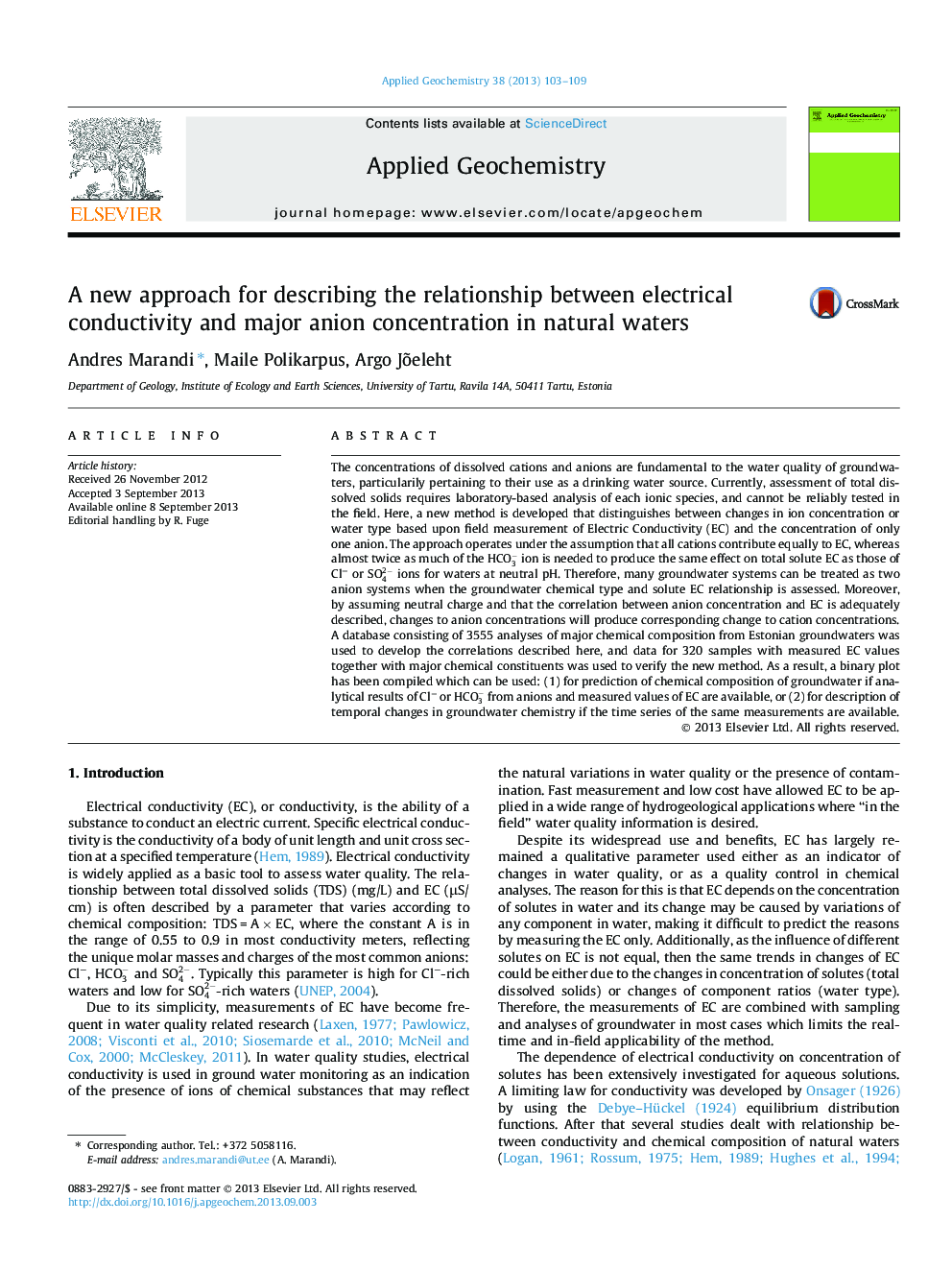| کد مقاله | کد نشریه | سال انتشار | مقاله انگلیسی | نسخه تمام متن |
|---|---|---|---|---|
| 4435911 | 1620253 | 2013 | 7 صفحه PDF | دانلود رایگان |

• New approach to the relationship between EC and major anion concentration is given.
• SO42- and Cl− concentration has higher effect on total EC compared to the one of HCO3.
• In our approach EC and one anion measurement is needed for water type prediction.
• We provide binary plot for prediction of chemical composition of groundwater.
• Method can be used to describe the major water chemistry changes of time series data.
The concentrations of dissolved cations and anions are fundamental to the water quality of groundwaters, particularily pertaining to their use as a drinking water source. Currently, assessment of total dissolved solids requires laboratory-based analysis of each ionic species, and cannot be reliably tested in the field. Here, a new method is developed that distinguishes between changes in ion concentration or water type based upon field measurement of Electric Conductivity (EC) and the concentration of only one anion. The approach operates under the assumption that all cations contribute equally to EC, whereas almost twice as much of the HCO3- ion is needed to produce the same effect on total solute EC as those of Cl− or SO42- ions for waters at neutral pH. Therefore, many groundwater systems can be treated as two anion systems when the groundwater chemical type and solute EC relationship is assessed. Moreover, by assuming neutral charge and that the correlation between anion concentration and EC is adequately described, changes to anion concentrations will produce corresponding change to cation concentrations. A database consisting of 3555 analyses of major chemical composition from Estonian groundwaters was used to develop the correlations described here, and data for 320 samples with measured EC values together with major chemical constituents was used to verify the new method. As a result, a binary plot has been compiled which can be used: (1) for prediction of chemical composition of groundwater if analytical results of Cl− or HCO3- from anions and measured values of EC are available, or (2) for description of temporal changes in groundwater chemistry if the time series of the same measurements are available.
Journal: Applied Geochemistry - Volume 38, November 2013, Pages 103–109